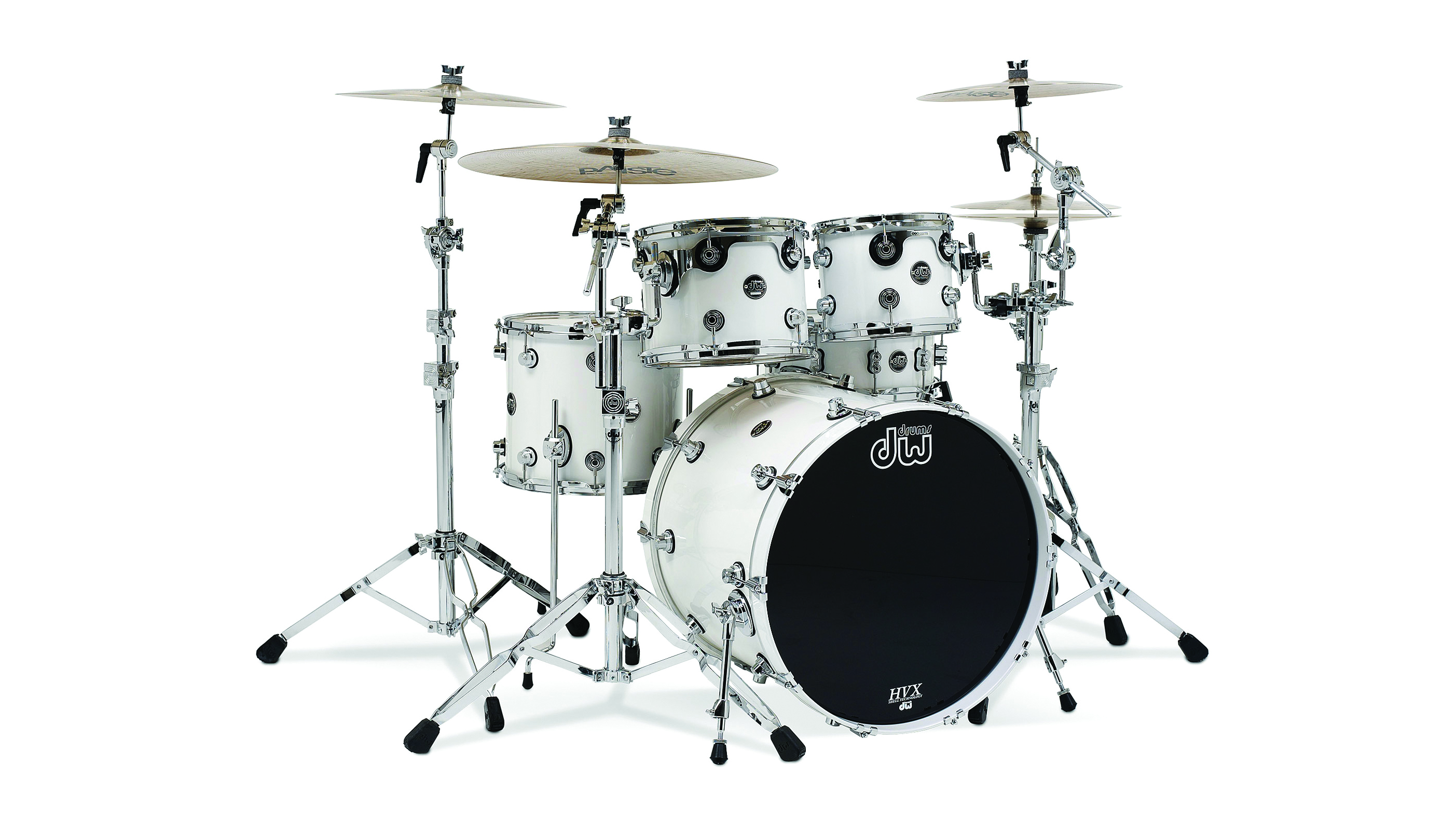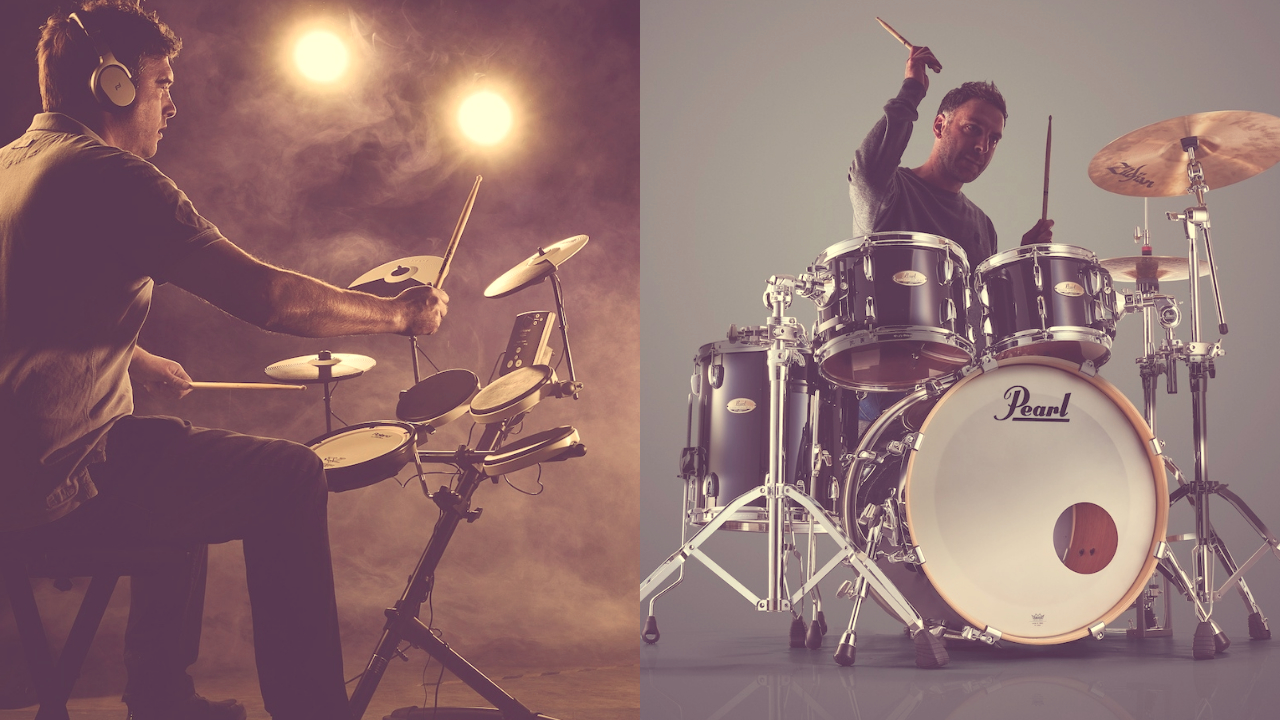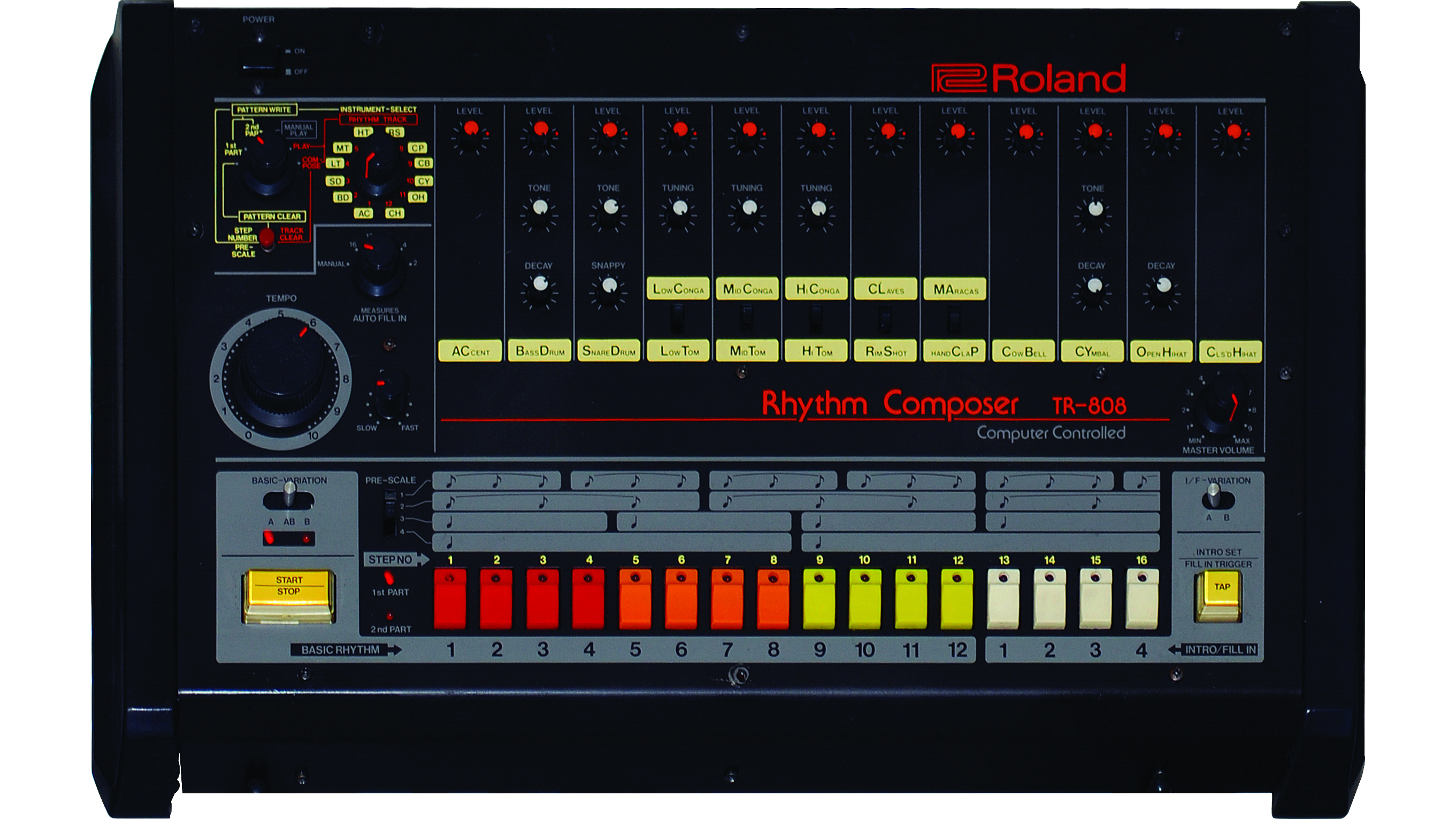A beginner's guide to the drum kit
Before you start your digital drumming journey, let’s take a tour of the instrument it’s all about…

For as long as human beings have walked the earth, there have been drums –and for almost as long, they’ve been accompanied by cymbals! From hollowed-out logs and frame-mounted hides through all manner of vaudevillian, military and orchestral percussion paraphernalia, the history of drumming is epic and diverse. This tale writ large and loud ultimately culminates in the modern drum kit, a seemingly disparate collection of instruments that came together at the start of the 20th century and forever changed the face of music.

From jazz and rock ’n’ roll, through pop, rock, soul, country and funk, and on to hip-hop, house, techno, drum ’n’ bass and every other genre of the last 80 or so years, the drum kit, whether real, synthesised or sampled, has been a constant presence. And although many of the playing techniques and styles have changed a lot over the decades, the essential make-up of the drum kit has remained largely the same, centring on the kick drum, snare drum and hi-hats/ride cymbal, supplemented by tom toms and crash cymbals.
If you’ve spent any time hanging around drummers, you may have heard them refer to their drum kit as comprising a number of ‘pieces’. This only refers to the number of drums in the kit – cymbals aren’t counted. And with the kick and snare being absolutely essential, the rest of the pieces are usually tom toms: a four-piece kit will have one mounted on or suspended over the kick drum – also known as a rack tom – and one floor tom, while a five-piece will add an extra rack tom (or possibly a second kick drum).
- The best drum sets 2020: the best drum kits for all levels and budgets
- Prefer to plug in? Try the best electronic drum sets for all budgets
- ...or the best beginner electronic drum sets
Beyond that, there are really no limits, and any number of rack toms, floor toms, rototoms, octobans, concert toms, gong drums or anything else the drummer fancies can be added into the mix. As touched on a moment ago, many drummers also employ a second kick drum, although space-saving double bass drum pedals are available as an alternative, enabling the same functionality to be had from the one drum.
Metal works
As for the cymbals, beyond the fundamental requirement of a pair of hi-hats and a ride, there really is no upper or lower limit to the amount of metalwork a drummer might choose to hang around the kit – space and reach permitting, of course. Some drummers like to envelop themselves in veritable clouds of the things, while others are satisfied with a couple of crashes. If you're looking for examples of some really over-the-top setups, try Googling the drum kits of Terry Bozzio, Mike Portnoy and Neil Peart. They might look kind of ridiculous, but their big-name owners absolutely make use of every component.
Today’s sample-based virtual drum kits pack all of these elements into a flexible software interface for triggering by keyboard, drum pads, manual note entry and, in most cases, an included library of MIDI clips.
Throughout the following pages in this month's set of features dedicated to the beat, we’re going to be dealing with both real and virtual drum kits. Our step-by-step walkthroughs will show you how to record the real thing, program and humanise the sample-based alternatives, and process, mix and enhance both. Let’s get started!
Get the MusicRadar Newsletter
Want all the hottest music and gear news, reviews, deals, features and more, direct to your inbox? Sign up here.
And what of the drum machines?

This issue is primarily dedicated to recorded and sampled acoustic drums, but (of course) no programmer of beats should overlook the characterful, sonically expansive sounds of the synthetic drum machine.
With a history going all the way back to the 30s, the drum machine has gone through endless changes, fashions, declines and revivals, ultimately finding its natural home in dance and electronic music. Although the sounds made by these electronic boxes might be miles away from their acoustic counterparts, all of them still categorise their sounds as regular drum kit components – kick, snare, toms, hi-hats, etc – and they’re often programmed to play exactly the same sorts of parts that real drummers play, or at the very least interpretations of them.
It’s testament to the longevity and continued relevance of the classics – most notably the Roland TR range – that many of the software plugin drum machines we use in our DAWs today are emulations of them. It’s not all nostalgia, though: there are also plenty of completely original virtual drum synths on the market, taking the concept to amazing new heights. Some of the best drum apps we've looked at recently include Sugar Bytes DrumComputer, Accusonus Rhythmiq, Mixed In Key Captain Beat and Auddict PercX Pro.
Breaking down the drum kit
Hi-hats
A pair of 12-15" cymbals mounted on a stand and brought together by pressing down a pedal at the base, the hi-hats can be played with sticks (with the cymbals closed most of the time, but often half-open for a ‘splashy’ sound) or pedalled to provide a distinctive ‘chick’ sound. The most commonly used playing technique is with the right hand (assuming the drummer is right-handed) ‘riding’ the hats on eighth-notes, crossing over the left hand, which strikes the snare. In some styles (most notably disco), the hi-hats play 16th-notes using both hands, with the right hand moving to the snare for the backbeat.
Tom toms
AKA rack toms. Used to provide syncopated embellishment to grooves and pseudo-melodic meat to fills and solos, tom toms range from 8" to 16" in diameter and are tuned to a specific set of pitches that also incorporates the floor tom(s) at the lower end.
Crash cymbals
Crashes are thin cymbals, generally ranging in size from 8" to 18", with anything below 13" referred to as a splash. They’re used for accenting significant beats and marking changes in a track, such as the transition into the chorus, and are almost invariably struck at the same time as the kick or snare. Variations on the crash cymbal include the China type, the crash-ride and, er, the Rocktagon – Google it.
- Put your best foot forward with the best bass drum pedals
- Find the right pair with our pick of the best drumsticks
- Stay in time with our pick of the best metronomes
Ride cymbal
A large (20-24"), heavy cymbal struck with the tip of the drumstick on the body, or the shoulder of the stick on the bell (the bulging section in the centre). While the majority of eighth-note riding action takes place on the hi-hats, for choruses and middle eights, drummers often switch to the ride cymbal for its bright, floaty, sustained sound. The bell can also be struck for a shorter, louder,
more cutting sound that’s typically associated with rock but is thoroughly usable in any genre.
Floor tom
Essentially extra-deep tom toms on legs, floor toms range in diameter from 14-18" and sit next to and behind the kick drum. They’re quite simply an extension of the rack toms, providing a deep bottom end to the tom tom frequency range.
Snare drum
A shallow (between 3" and 6.5" deep, usually) drum with a rack of ‘crimped’ springs stretched across the bottom head, the snare provides that cornerstone of popular music known as the backbeat: relentless hits on beats 2 and 4. The snare can be struck on the head alone, or on the head and rim at the same time – this is a complicated-sounding manoeuvre called a rimshot that’s actually an almost unconscious technique for any half-decent drummer. The sidestick (often erroneously also called a rimshot), meanwhile, involves holding the tip of the stick on the centre of the head and dropping the butt end down onto the rim. This produces the distinctive ‘click’ that’s been the mainstay of many an '80s ballad.
Kick drum
The kick drum (or bass drum, as it’s traditionally known) delivers the power and bottom end of the drum kit. Measuring between 18 and 24" in diameter, and sitting on its side on the floor, it’s played with the foot using a pedal-mounted beater. In pop, rock and many styles of dance music, the kick drum generally complements the bassline, directly following it or weaving around it. In house, techno and other four-to-the-floor styles, of course, it simply nails every beat of the bar – surely the most ubiquitous and powerful rhythmic device of the last 30 years. Many metal drummers use two bass drums for the fast double-kick grooves that are essential to that style.
Computer Music magazine is the world’s best selling publication dedicated solely to making great music with your Mac or PC computer. Each issue it brings its lucky readers the best in cutting-edge tutorials, need-to-know, expert software reviews and even all the tools you actually need to make great music today, courtesy of our legendary CM Plugin Suite.










